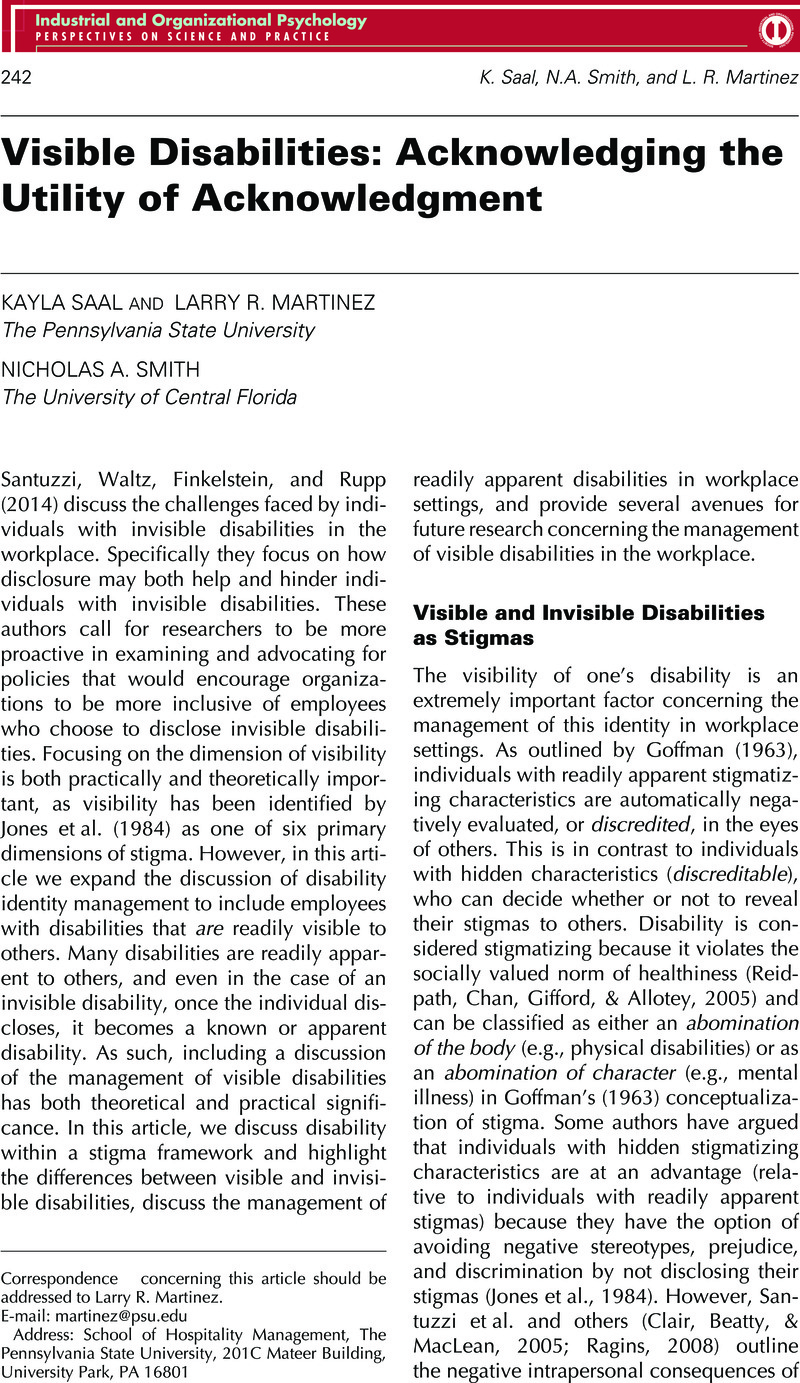Crossref Citations
This article has been cited by the following publications. This list is generated based on data provided by Crossref.
Cheung, Ho Kwan
King, Eden
Lindsey, Alex
Membere, Ashley
Markell, Hannah M.
and
Kilcullen, Molly
2016.
Research in Personnel and Human Resources Management.
Vol. 34,
Issue. ,
p.
101.
Padkapayeva, Kathy
Posen, Andrew
Yazdani, Amin
Buettgen, Alexis
Mahood, Quenby
and
Tompa, Emile
2017.
Workplace accommodations for persons with physical disabilities: evidence synthesis of the peer-reviewed literature.
Disability and Rehabilitation,
Vol. 39,
Issue. 21,
p.
2134.
Luu, Trong Tuan
2019.
The well-being among hospitability employees with disabilities: The role of disability inclusive benevolent leadership.
International Journal of Hospitality Management,
Vol. 80,
Issue. ,
p.
25.
Doyle, Nancy
and
McDowall, Almuth
2022.
Diamond in the rough? An “empty review” of research into “neurodiversity” and a road map for developing the inclusion agenda.
Equality, Diversity and Inclusion: An International Journal,
Vol. 41,
Issue. 3,
p.
352.
Luu, Tuan Trong
2022.
A tale of two countries: How do employees with disabilities respond to disability inclusive HR practices in tourism and hospitality industry?.
Journal of Sustainable Tourism,
Vol. 30,
Issue. 1,
p.
299.
Bogart, Kathleen R.
Bryson, Brooke A.
and
Harcourt, Diana
2023.
Disclosing the obvious: Psychosocial implications of (not) explaining facial differences.
Body Image,
Vol. 46,
Issue. ,
p.
91.
Lin, Zhongxuan
and
Yang, Liu
2023.
The performative body of disabled women: Toward the politics of visibility in China.
European Journal of Cultural Studies,
Vol. 26,
Issue. 5,
p.
642.



